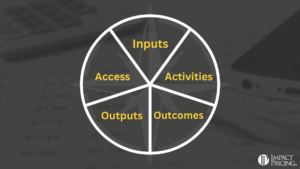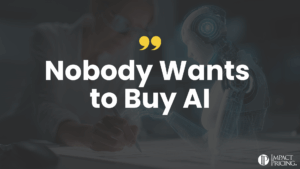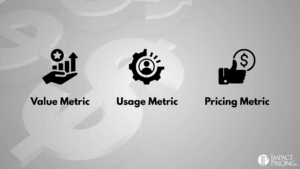Question: “For a sales team, what are the top pieces of pricing collateral I should create?” from Kelsey who is in Product Marketing.
Answer: The two most valuable tools you can give your sales team are a value in use map and a value in the choice map. It’s all about value!
PSRV tables: Problem, Solution, Result, Value
Both of these maps could be called PSRV tables: Problem, Solution, Result, Value. The more complete you make this table, the more of the correct information you are providing your salespeople.
- Problem: What problems are the buyers trying to solve. When salespeople talk about the problems with buyers, they build rapport and demonstrate they know and care about the buyers.
- Solution: These are our features. We spend way too much time talking about our features. These are only on the list because they answer the question, “How do you do that?”
- Results: These qualitative results essentially say, “we solve that problem.” There are multiple levels of results. For example, you may have heard the classic Ted Levitt quote, “People don’t want to buy a quarter-inch drill. They want a quarter-inch hole.” So, the result could be owning a drill, or have a hole drilled… or hanging a picture… or having an attractive living room. The results can go on. You are looking for the results that resonate with your buyers.
- Value: This is the hardest by far because most people don’t understand value. The goal here is to put a dollar value on the result. All buyers are different, but when your salespeople know how to help a buyer calculate this, then they are selling value.
The difference between a value in use map and a value in the choice map is whether or not there is competition. When there is no competition, the PSRV table is made up of the problems you solve, your solutions, the results the buyer might expect and the value of solving those problems.
When there is competition, you must find the PSRV’s where you are differentiated from your competition. That value in choice, when you help a buyer realize it, drives how much of a premium you can win over your competition.
What do you think?














